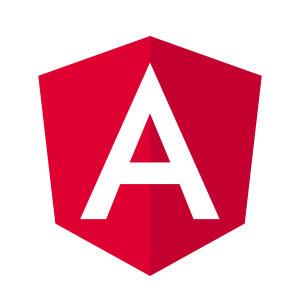Choosing the Right Framework: Angular vs. Flutter for Web App Development
In the dynamic landscape of web app development, the choice of a framework can be pivotal in determining the success of your project. Two powerful contenders, Angular and Flutter, have emerged as popular options, each bringing its unique strengths and capabilities to the table. As you embark on the journey of crafting a web app, it becomes paramount to make an informed decision. This article serves as your guide, as we delve into a comprehensive comparison of Angular and Flutter. We will explore their features, advantages, and use cases, providing you with the insights needed to choose the framework best suited for your web app development aspirations. Whether you are a seasoned developer or a novice in the field, the battle of Angular vs. Flutter is sure to help you chart your course with confidence in the realm of web application creation.
1. Angular: Features, Pros, Cons, and Preferred Use Cases
Angular is a comprehensive, open-source web application framework developed by Google. It’s designed for building dynamic, single-page web applications and offers a wide range of features, pros, and cons.
Here’s an overview:
| Feature | Description |
|---|---|
| Declarative UI | Angular leverages HTML as the primary language for defining the user interface. This declarative approach makes it easier to understand and maintain the codebase. |
| Modular Architecture | Angular promotes a modular design, dividing applications into smaller, reusable components. This modularity enhances code organization and maintainability. |
| Two-Way Data Binding | One of Angular’s standout features, two-way data binding, ensures that changes in the model automatically reflect in the view and vice versa. This simplifies keeping the UI in sync with the underlying data. |
| Dependency Injection | Angular provides a built-in dependency injection system, simplifying the management of components and their dependencies. This promotes a more organized and testable codebase. |
| Powerful CLI | Angular CLI (Command Line Interface) streamlines project setup, code generation, and deployment tasks. It offers a range of commands for efficient project management. |
| TypeScript | Angular is built with TypeScript, a statically typed superset of JavaScript. TypeScript enhances code quality by catching errors during compile-time, resulting in more robust applications. |
| Extensive Ecosystem | Angular boasts a rich ecosystem with numerous libraries, tools, and extensions available. This extended ecosystem facilitates the development process and offers solutions for various use cases. |
Pros
| Pros | Description |
|---|---|
| Scalability | Angular is well-suited for large and complex applications. Its modular and component-based architecture supports scalability by facilitating the management of intricate projects. |
| Mature and Stable | Angular is a mature framework with a robust community and extensive documentation. This maturity ensures long-term support and a wealth of resources for developers. |
| Cross-Platform | Angular can be employed to create both web and mobile applications using technologies like Ionic or NativeScript. This cross-platform capability simplifies development for multiple platforms. |
| Strong Type System | Angular’s use of TypeScript provides strong type checking, reducing the likelihood of runtime errors and improving code quality and maintainability. |
| Built-in Testing | Angular includes tools and support for unit and end-to-end testing. This facilitates the creation of reliable and robust applications through effective testing strategies. |
Cons
| Cons | Description |
|---|---|
| Learning Curve | Angular has a relatively steeper learning curve, especially for developers new to TypeScript and complex frameworks. This learning curve can be challenging for those new to the Angular ecosystem. |
| Complexity | While Angular’s comprehensive feature set is a strength for complex applications, it can be overkill for simpler projects. This complexity may result in more overhead than necessary for basic web applications. |
| Verbose Code | Angular can lead to more verbose code compared to some other frameworks. This verbosity is primarily due to the framework’s comprehensive feature set, which can result in additional boilerplate code. |
Now as far as the prefered cases where it’s being used
| Use Cases | Description |
|---|---|
| Large and Complex Applications | Angular excels in building large and complex applications where modularity and scalability are crucial. It is an ideal choice for enterprise-level projects with intricate requirements. |
| Projects Requiring High Performance | Angular’s powerful data binding and change detection mechanisms make it suitable for applications where high performance is a priority. These features help maintain an efficient user experience in real-time applications. |
| Mature Development Team | Angular is a strong candidate when you have an experienced development team that is already familiar with TypeScript or has the capability to quickly adopt TypeScript. This expertise can help mitigate the learning curve. |
| Cross-Platform Development | Angular’s versatility makes it a compelling choice for projects that demand both web and mobile applications. Using technologies like Ionic or NativeScript, developers can leverage Angular’s capabilities for multiple platforms. |
Angular is a robust and versatile framework that excels in building large, complex web applications, particularly in cases where performance, scalability, and an experienced development team are paramount considerations. Its extensive feature set, coupled with a strong ecosystem, ensures that it remains a powerful choice for a wide range of web development projects.
2. Flutter: Features, Pros, Cons, and Preferred Use Cases
Flutter is an open-source UI framework developed by Google for building natively compiled applications for mobile, web, and desktop from a single codebase.
Here’s an overview of its features, pros, cons, and preferred use cases:
| Feature | Description |
|---|---|
| Hot Reload | Flutter’s hot reload feature allows developers to make real-time code changes, offering immediate feedback without restarting the application. This greatly speeds up the development process. |
| Widgets | Flutter offers a rich set of customizable widgets for building the user interface. The widget-driven approach provides flexibility and efficiency in UI development. |
| Single Codebase | Flutter enables the creation of applications for multiple platforms, including iOS, Android, web, and desktop, using a single, shared codebase. This simplifies development and maintenance. |
| Dart Language | Flutter utilizes the Dart programming language, known for its high performance and efficient just-in-time (JIT) compilation. |
| Material Design and Cupertino Widgets | Flutter provides ready-made widgets for Material Design (Android) and Cupertino (iOS) styles, ensuring a consistent and platform-appropriate look and feel. |
| Access to Native Features | Flutter offers plugins to access device features and native APIs, allowing for seamless integration with device hardware and software. |
Pros
| Pros | Description |
|---|---|
| Single Codebase | The ability to use a single codebase for multiple platforms simplifies development and maintenance, reducing time and effort. |
| Hot Reload | Real-time code changes streamline development and debugging, making the development process more efficient and responsive. |
| Rich Widget Library | Flutter’s extensive widget library offers flexibility in UI design, allowing developers to create custom, responsive, and visually appealing interfaces. |
| High Performance | Flutter’s Dart language and native compilation result in high performance and smooth animations, enhancing the user experience. |
| Strong Community | Flutter has a growing and active community, providing abundant resources, plugins, and packages for developers. |
Cons
| Cons | Description |
|---|---|
| Limited Native Functionality | While Flutter provides access to native features, it may not have the same depth of native libraries and APIs as platform-specific languages, potentially limiting access to certain platform-specific functionalities. |
| Larger App Size | Flutter applications tend to have a larger file size compared to some native apps. This is due to the inclusion of the Flutter engine, which can result in larger downloads for users. |
| Learning Curve | For developers not familiar with the Dart language, there may be a learning curve when getting started with Flutter. However, this learning curve may be mitigated for those with experience in other languages. |
As for the Preferred Use Cases
| Use Cases | Description |
|---|---|
| Cross-Platform Development | Flutter is an excellent choice when you need to develop applications for multiple platforms (iOS, Android, web, and desktop) while maintaining a single codebase, streamlining development and maintenance. |
| Rapid Prototyping | Flutter’s hot reload and rich widget library make it a preferred option for rapid prototyping and quick iterations, allowing developers to experiment and make changes on the fly. |
| Startups and Small Teams | Small development teams and startups can benefit from Flutter’s efficiency, enabling them to develop for both major mobile platforms with fewer resources. |
| Apps with Custom UI | If your application requires a highly customized and visually appealing user interface, Flutter’s widget-driven approach allows for flexibility in design. |
| Apps Requiring Real-Time Updates | For applications that need real-time data updates and smooth animations, Flutter’s hot reload and high-performance capabilities are significant advantages, ensuring a responsive user experience. |
Flutter offers a versatile and efficient framework for cross-platform development, rapid prototyping, and applications with custom UI requirements. Its hot reload feature, rich widget library, and single codebase approach make it a compelling choice for a variety of projects, with the specific choice depending on project requirements and the developer’s familiarity with the Dart language.
3. Conclusion
In conclusion, the choice between Angular and Flutter for web app development represents a pivotal decision in the journey of creating robust and efficient applications. Both frameworks come equipped with distinct features, advantages, and limitations, tailored to suit diverse project requirements.
Angular, with its mature ecosystem and extensive set of features, proves to be an ideal choice for large-scale, enterprise-level applications where scalability and performance are paramount. Its strong type system and comprehensive tooling support make it an excellent companion for seasoned development teams and complex projects. However, it is essential to acknowledge the steeper learning curve and potential verbosity associated with Angular, which may require an initial investment in time and expertise.
On the other hand, Flutter shines as a versatile option, providing cross-platform capabilities and rapid development through its single codebase and hot reload feature. It’s well-suited for startups, small teams, and projects that require a custom and visually appealing user interface. While Flutter may offer limited native functionality and result in larger app sizes, it’s an exceptional choice for those looking to streamline development, embrace a vibrant community, and experience efficient real-time coding.
The ultimate decision hinges on the specific needs and preferences of your project. Whether you prioritize the robustness and performance offered by Angular or the agility and cross-platform capabilities of Flutter, both frameworks are valuable assets in your web app development toolbox. The choice, in the end, will reflect your project’s goals and the expertise of your development team, ensuring the creation of web applications that meet the highest standards of performance and user experience.




